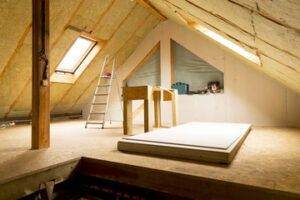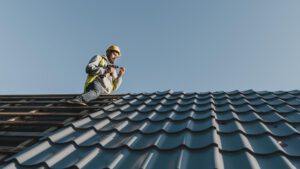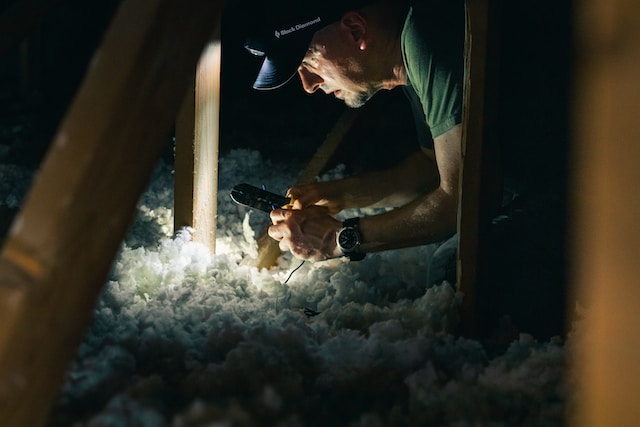Airbnb Breakdown Academy Review is an online course that teaches you how to earn a lucrative income through short-term rentals without owning properties. The course focuses on essential aspects of the business, including creating an LLC and optimizing listings. It also introduces automation tools and a budget expense sheet.
The course costs $1,497 and comes with a 30-day money-back guarantee. Its popularity and positive feedback suggest that it may be worth the investment, but it’s important to consider the risks and benefits carefully.

The Airbnb Breakdown Academy is a course created by Bryson Blocker and Inayah McMillan that claims to teach you how to make passive income through Airbnb rental arbitrage. They claim to have earned millions in monthly revenue without owning physical properties. The course costs $1,497 and comes with a 30-day money-back guarantee. It also includes a free checklist and automated message templates that help increase bookings. Its popularity and positive feedback suggest that the Airbnb Breakdown Academy is a legitimate business model. However, it is important to conduct research before committing to the course. It is also important to consider the need for personalized coaching and negative feedback on YouTube before deciding whether or not it is right for you.
The creators of the Airbnb Breakdown Academy are two college dropouts who became successful entrepreneurs at a young age. They ventured into different businesses, including e-commerce, forex trading, and nannying, before discovering the potential of Airbnb rental arbitrage. They have since built a seven-figure income, earning them acclaim from Forbes and Yahoo. Their success story is an inspiration for others who are looking to escape the 9-to-5 grind and become their bosses.
Airbnb Breakdown Academy provides a step-by-step guide to making a profitable six-figure income through short-term rentals. It includes video training, scripts, and templates to streamline communication with guests and landlords. It also covers critical topics, such as locating profitable areas and securing funding without personal funds. It also teaches you how to automate your Airbnb business and reduce expenses with automation tools. Airbnb Breakdown Academy also provides a private community and a 30-day money-back guarantee with conditions.
While some people may find Airbnb Breakdown Academy scam-related comments on YouTube, it’s important to remember that this type of income is not easy and requires hard work. However, learning how to use Airbnb rental arbitrage to generate a passive income is worth the effort. Ultimately, enrolling in the course will depend on your financial goals and personal preferences. It is essential to weigh the benefits and risks of Airbnb rental arbitrage before committing to a course.
The Airbnb Breakdown Academy is a popular online course that provides insights into Airbnb rental arbitrage as a viable source of passive income. It was created by Bryson Blocker and Inayah McMillan, two young entrepreneurs who have achieved impressive financial success through their Airbnb business. Its popularity and positive reception suggest that it is a worthwhile investment. The course costs $1,497 and includes video training, scripts, templates, community access, and automation tools. The program also comes with a money-back guarantee.
The course includes detailed tutorials on essential aspects of the Airbnb business, including LLC setup, listing optimization, and guidebook creation. It also provides tips on attracting high-value guests and leveraging automation tools. Additionally, it offers a free 90-minute introductory course on Sundays. The program is available in both English and Spanish and includes a comprehensive list of FAQs.
Unlike most Airbnb rental arbitrage courses, the Airbnb Breakdown Academy targets individuals with limited capital and resources. Its founders are successful Airbnb hosts who share their experiences and tips with others. They also provide a step-by-step plan to build an Airbnb business. The course also covers important topics, such as securing funding without using personal funds and transforming rejections into approvals.
Airbnb Breakdown Academy teaches students to use short-term rentals to generate substantial income and gain wealth. Its creators, Bryson Blocker and Inayah McCillan, are young entrepreneurs who have made millions in revenue through their Airbnb business. They have a proven track record and extensive social media following, and their course has been featured on Forbes and Yahoo.
In addition to its course content, the Airbnb Breakdown Academy offers an affiliate program and free webinars to help students succeed in their businesses. The company’s affiliates can earn up to $2,000 monthly in commissions, and the program offers a 30-day refund policy.
Airbnb Breakdown Academy is a valuable resource for beginners who want to start an Airbnb rental business. However, it is not a “ticket to passive income,” and the success of your Airbnb rental business depends on several factors, including market conditions, location, competition, and individual effort.
Airbnb Breakdown Academy is an online course that promises to teach users how to make a six-figure income through rental arbitrage without owning any properties. The course was created by Bryson Blocker and Inayah McMillan, two college dropouts who became successful entrepreneurs at a young age. They tried a variety of business models, including e-commerce, forex, drop shipping, and nannying, before discovering Airbnb rental arbitrage.
The course costs $1,497 and does not include personalized coaching or mentorship. However, it does provide a community for students to ask questions and receive support. In addition, it offers a free 90-minute course on Sundays that can help users decide whether the course is right for them.
In addition to video training, the course includes scripts and templates that streamline communication with guests. It also provides information on automation tools that can enhance the efficiency of your Airbnb rental business. It also gives insights into securing a property in a profitable location, which is crucial for maximizing booking success.
It is important to note that Airbnb Breakdown Academy is not a magic bullet and only guarantees success. To be successful, you must be willing to work hard and take risks. You must also understand that many factors influence your Airbnb business, including market conditions, location, and competition.
The Airbnb Breakdown Academy is a popular online course that promises to give you a blueprint for earning millions in passive income through Airbnb rental arbitrage without owning any properties. Its instructors, Bryson Blocker and Inayah McCmillan, are well-known for their entrepreneurial spirit and innovation. They’ve earned millions in revenue through Airbnb rentals and offer their insights on the site to help others earn a similar income. The program costs $1,497 and comes with a conditional 30-day refund policy. Its comprehensive training covers everything from creating an LLC to setting up a virtual property manager and furnishing your home. It also features a budget expense sheet, automated messaging templates, and a checklist. These tools will save you time and money while boosting your profit margins.
Airbnb Breakdown Academy is an online course that teaches students how to make a lucrative income through rental arbitrage without owning any properties. The course is designed by Bryson Blocker and Inayah McMillan, two college dropouts who became successful entrepreneurs at a young age. Before discovering the Airbnb rental arbitrage model, they experimented with various business models, including e-commerce, forex, nannying, and beauty care. Their success story serves as an inspiration for others who want to pursue their entrepreneurial dreams.
Airbnb rental arbitrage is a challenging and time-consuming business. It requires a high level of active involvement, especially when dealing with guests and managing maintenance and repairs. Moreover, it is important to have an established budget and plan for expenses. The Airbnb Breakdown Academy course provides a comprehensive training guide with detailed step-by-step instructions to help students succeed in this business. It also offers video training and a private community to support students. Moreover, the course provides scripts and templates to streamline operations. It also provides a budget expense sheet and other helpful resources to help students maximize profits.
The Airbnb Breakdown Academy review has a lot of positive reviews, and it is a popular choice among students looking to supplement their income or escape the 9-to-5 grind. The course covers everything from creating an LLC to optimizing listings and furnishing your property. It also covers important business topics, such as attracting high-paying clients and making money from referrals.
While Airbnb rental arbitrage has been a great source of passive income for many people, there are more effective strategies for some. The main challenge is finding the right balance between work and life and setting realistic expectations is vital. There are many scams on the internet, and it’s essential to research any claims thoroughly before deciding.
Airbnb Breakdown Academy offers an immersive learning experience that is a great option for those new to the real estate industry. Its comprehensive training covers all aspects of the business and provides a free 90-minute course on Sundays. The Airbnb Breakdown Academy review has also been criticized for lacking personal coaching and mentorship, which can be crucial in this type of business.


